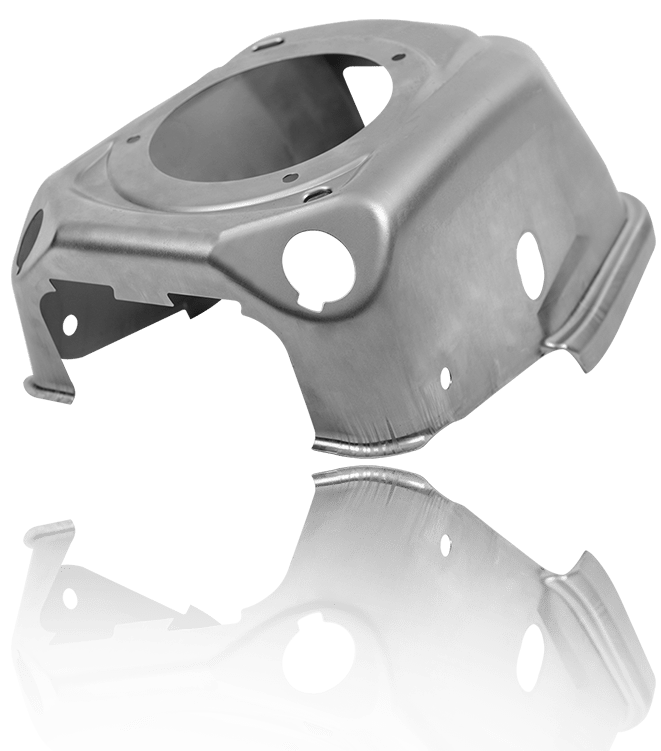The Evolution of Steel Stamping Procedures: Advancements and Applications
The world of steel stamping processes has actually observed a transformative journey noted by consistent innovation and adjustment to satisfy the demands of modern commercial techniques. The applications span across a range of sectors, each profiting uniquely from the improvements in steel marking processes.
Conventional Steel Marking Strategies
Traditional metal stamping methods have long been the structure of producing procedures in numerous sectors due to their efficiency and precision. The process includes developing a metal sheet or coil into a preferred form by pressing it between a die and a punch. This technique is commonly utilized for creating big amounts of components with high precision at a fast speed.
One of the essential advantages of conventional metal stamping techniques is the ability to maintain tight resistances, ensuring that each component fulfills the called for requirements constantly. This degree of precision is necessary in sectors such as vehicle, aerospace, and electronic devices, where even minor discrepancies can result in significant issues.
Furthermore, typical steel stamping techniques supply cost-efficient remedies for automation compared to other making techniques. The capability to stamp components in quick succession decreases manufacturing time and decreases labor costs, making it an eye-catching choice for companies looking to maximize their production processes.
Appearance of High-Speed Stamping

One of the crucial advantages of high-speed stamping is its capacity to maintain accuracy and uniformity even at increased processing speeds. This accuracy is essential in sectors where tight tolerances and detailed designs are needed. In addition, high-speed stamping permits the handling of a vast array of products, including aluminum, stainless-steel, and copper, more broadening its applicability throughout various industries.
Moreover, the emergence of high-speed stamping has allowed suppliers to meet the growing demand for complicated parts in industries such as automobile, aerospace, and electronics (Metal Stamping). By leveraging the speed and precision of high-speed marking modern technology, companies can enhance their competitiveness in a quickly progressing market landscape
Innovations in Tooling Modern Technology
With the evolution of high-speed stamping enabling improved precision and effectiveness in metal developing processes, the field of metal stamping has seen considerable improvements in tooling innovation. Tooling innovation plays a critical duty in steel marking procedures, influencing elements such as product this article quality, production speed, and total cost-effectiveness. One vital advancement in tooling modern technology is the growth of smart tooling systems that include sensing units and checking gadgets to supply real-time data on the stamping procedure. These systems can identify concerns such as tool wear or misalignment, allowing for prompt changes to keep ideal performance.
By utilizing these sophisticated products, tooling suppliers can produce dies and molds that stand up to the high stress and temperature levels involved in metal stamping processes, resulting in longer tool life and enhanced manufacturing performance. Overall, these advancements in tooling innovation have reinvented the steel marking sector, permitting suppliers to attain greater degrees of accuracy, performance, and price financial savings.
Assimilation of Automation in Marking
As automation continues to improve the landscape of steel marking procedures, the combination of automated systems has actually ended up being progressively common in contemporary manufacturing facilities. Automated systems offer numerous advantages in steel marking, including enhanced efficiency, improved precision, and boosted security. By including automation into stamping procedures, suppliers can minimize cycle times, lessen material waste, and optimize manufacturing throughput.
One of the crucial elements of automation in marking is using robotic arms for jobs such as material handling, component control, and quality assessment (Metal Stamping). These robotic systems can execute repeated and labor-intensive tasks with rate and precision, liberating human drivers to concentrate on even more complicated procedures. Furthermore, automation permits real-time tracking and adjustment of marking procedures, causing higher general procedure control and quality control
Additionally, the assimilation of automation in stamping allows manufacturers to accomplish regular part high quality, meet tight resistances, and boost general performance. As technology remains to advance, the function of automation in steel marking processes is expected to increase further, driving development and performance in the production industry.
Applications Across Diverse Industries
Integrating metal marking processes across varied markets showcases the flexibility and flexibility of this production technique. In addition, the home appliance industry advantages from metal stamping processes to produce parts for fridges, washing machines, and Source various other home devices. The versatility of metal stamping processes makes it a beneficial production technique throughout various markets, demonstrating its relevance in modern manufacturing processes.
Verdict

Comments on “Metal Stamping Procedures: From Prototyping to Automation”